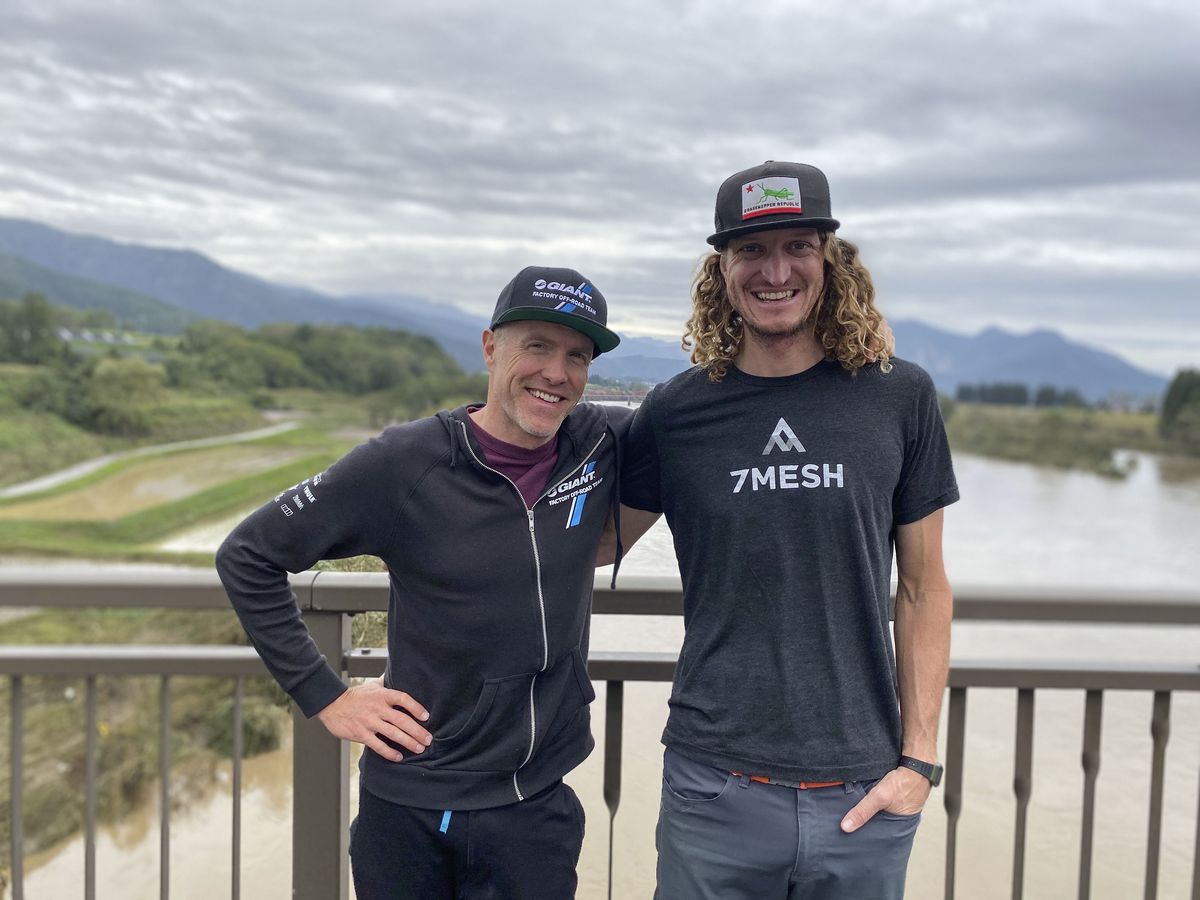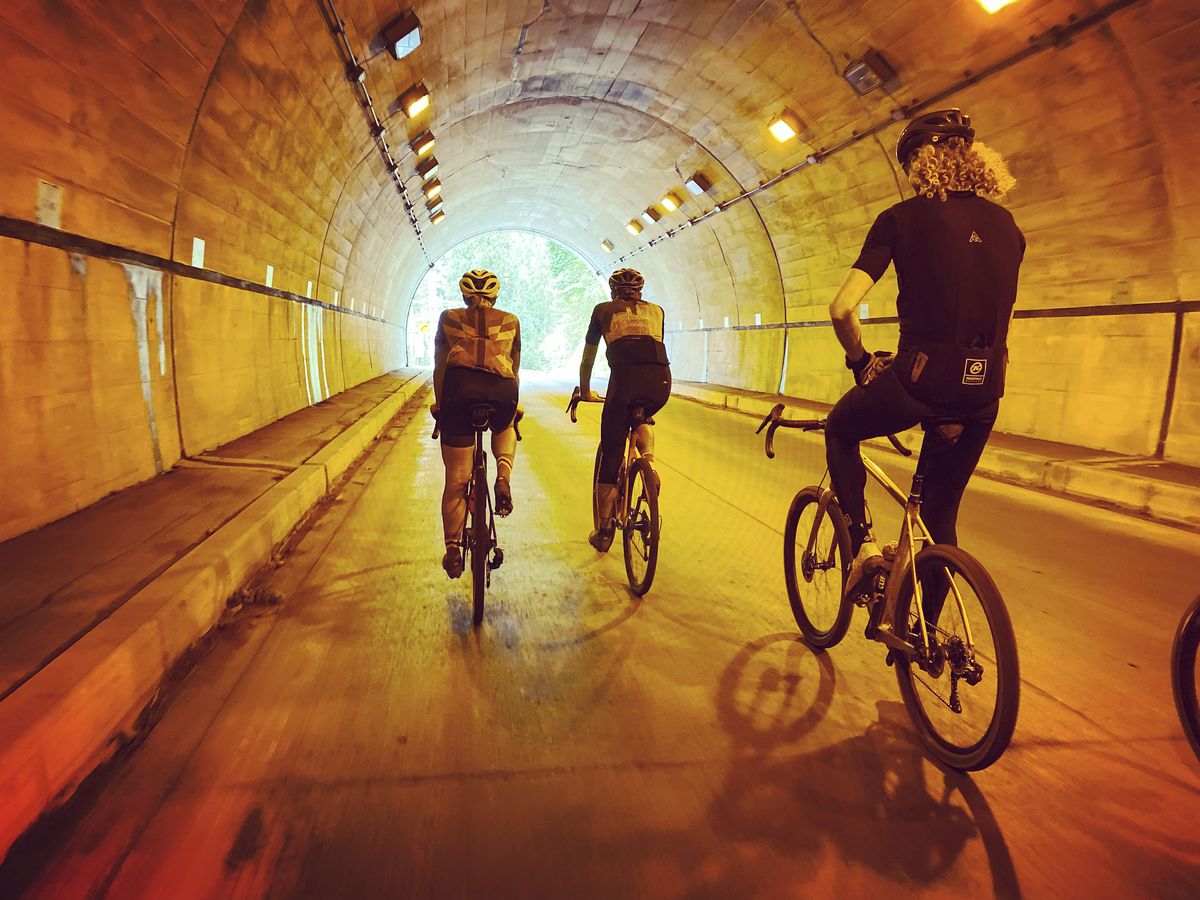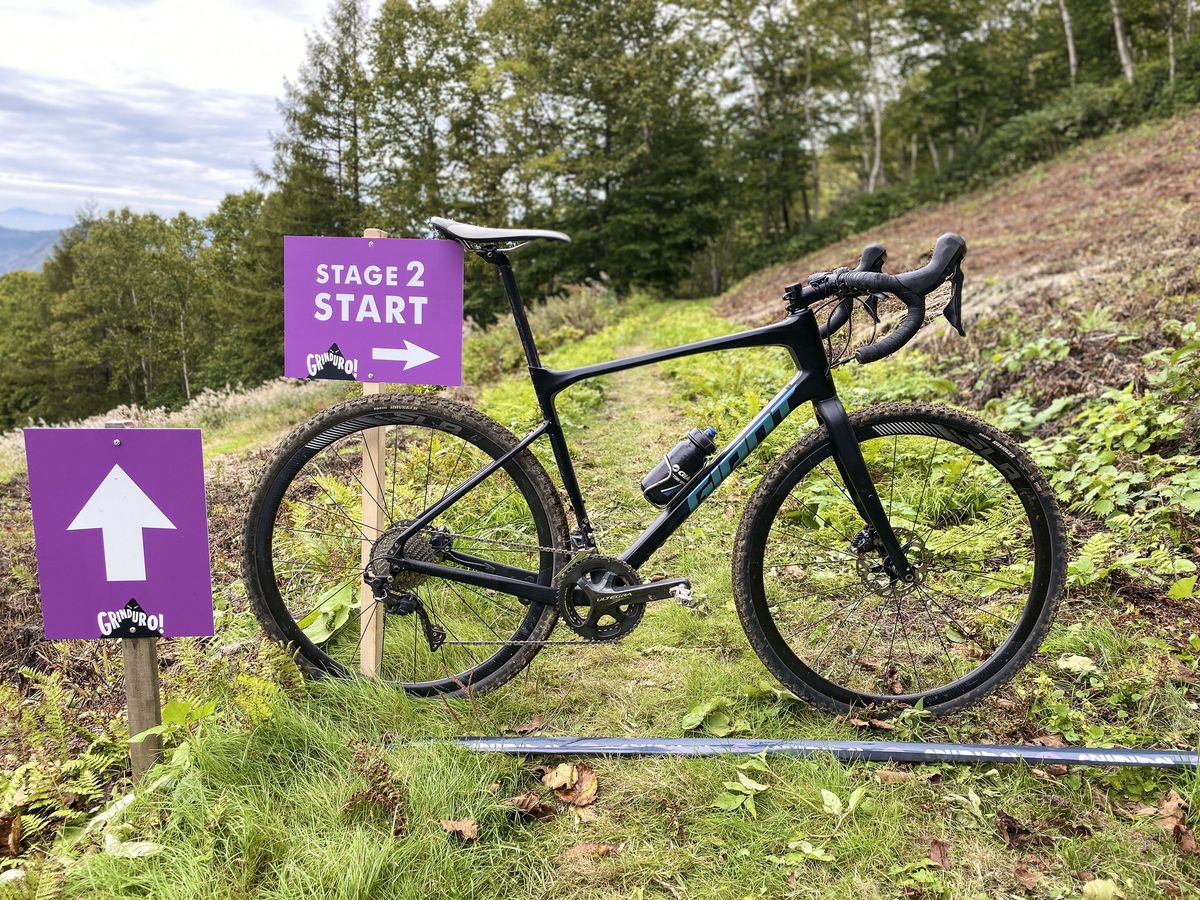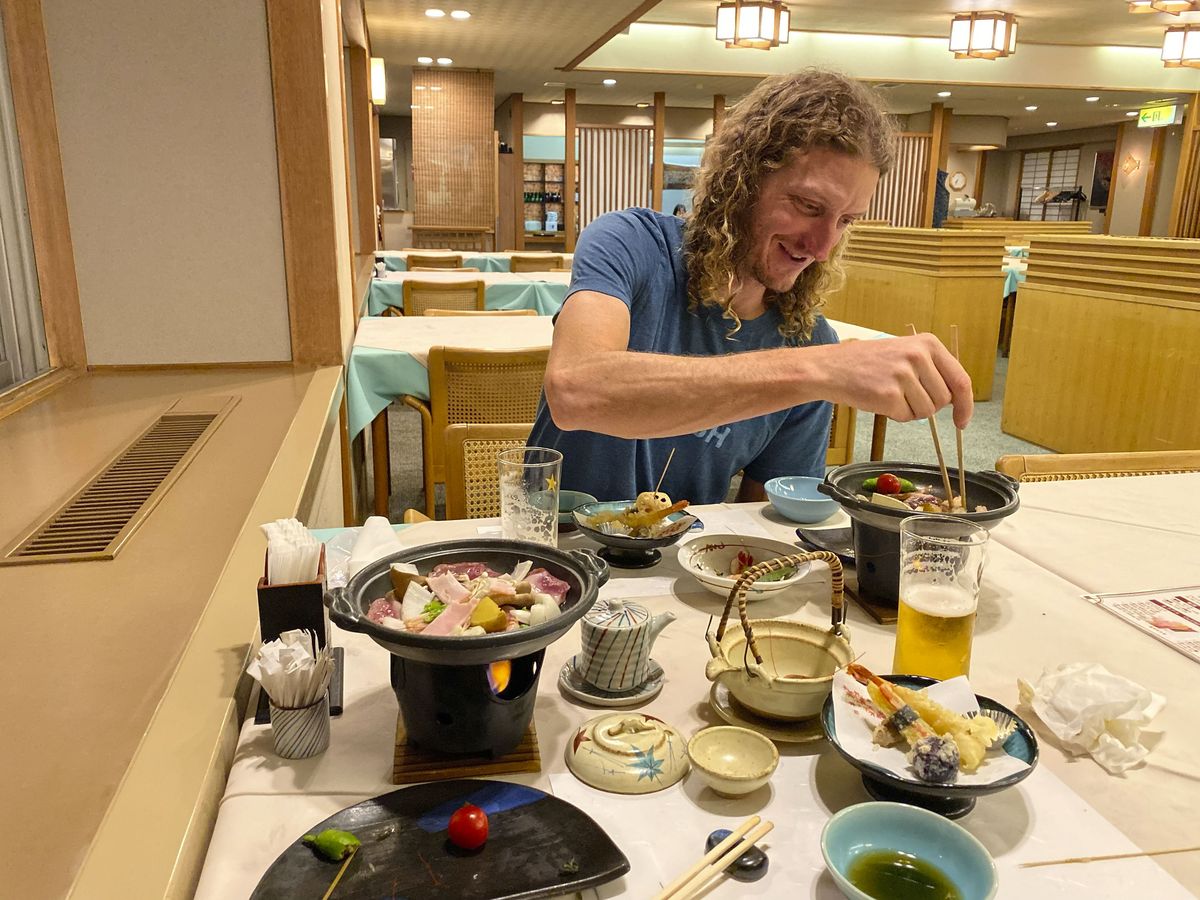by Carl Decker
The Grinduro “gravel enduro” concept is not new, really. It’s a purpler twist on Enduro MTB racing. Which was stolen from motorbike racing, which was preceded by four-wheeled Rally racing, and probably some sort of Enduro horse racing prior to that.
A long day in the field with intermittent bouts of all-out racing, separated by transits, or liaisons or whatever you’d like to call non-timed mileage—it’s a format that has appeal across several sports. The popularity of Grinduro’s fresh take, however, is as compelling as any of them.
There are four Grinduro events this year, as the “Party to Race Ratio” franchise has begun expanding thanks to the popularity of its event in Quincy, California—an event that has sold out every year since it began some five years ago.
It’s only the Quincy event that I’m familiar with though—a race I’ve ridden four times and won once. It is a race that is palpably different from any other event I’ve done, from the camp vibes at the Plumas County Fairgrounds to the unique mix of riders and revelers and industry insiders that attend it.
Quincy, a tired logging town experiencing a spark of renewal in the form of cycling tourism, is central to the Grinduro plot as well. The mountains there are big and beautiful, the riding the perfect amount of remote. That special place—and the food, and the custom steel Ron-Duh-Nay riding hipsters— make Grinduro what it is.
Or do they?
A New Way of Grinduroing
When I heard that Grinduro was coming to Japan this year, I was pumped. Of course, I wanted to go. And of course, it sold out immediately. I feared I’d missed the boat.
But my favorite adventure sidekick, Barry Wicks, was keen for some adventuring out East too, and being a Giro athlete (Giro produces the race series), he secured us a couple of entries. A few weeks later, Barry and I were on a plane headed for Tokyo. With no idea what the course was like, a vague idea where the venue was and only each other to rely on in getting there.
Fortunately, Barry had been to Japan several times for cyclocross events in the past. And for me, it would be my third trip to Japan, a place that presents bizarre challenges and surprising rewards around every corner.

Carl Decker and Barry Wicks teamed up for a Grinduro Japan adventure.
My first trip, in 2008, was actually to spectate at one of those Grinduro antecedents I mentioned earlier, Rally Japan, a perennial stop on the World Rally Championship circuit. On that first trip, I learned about the magic of electric Japanese toilets; the difficulty of driving on the wrong side of the road through Sapporo while effectively illiterate; and that rules in Japan are plenty and they are meant to be followed.
But simply being arrested for 8 hours and subsequently dressed down by 5 angry Japanese officials in some dark Hokkaido forest couldn’t deter me from falling in love with the Island. Japan is weird in good ways—and bad.
Once on the ground in Tokyo, with bike cases over one shoulder and duffle bags over the other, Barry and I shuffled and shrugged our way from one train to another as we made our way to the venue, 5 hours distant.
We’d sit serenely aboard the Hokuriku Shinkansen train at 160mph through the mountains that played host to the Nagano Olympics in 1998. Then, by taxi, we’d finally wind our way up an old pass to a mountain summit and Madarao Kogen, a large and mostly vacant hot-spring hotel that towers over a dilapidated but charming 1970s era ski village.
The weather was sunny, and our spirits were high. We’d made it to Grinduro! Hai! We went for a mountainous jog and hit the onsen (Japanese hot spring pool) after a traditional—and wild—Japanese dinner at the hotel.

Decker and Wicks spent some time relaxing at the hotel spa.
By then, of course, we’d heard of the coming typhoon. Hagibis was on a direct course for Tokyo, and the category 5 storm was expected to wreak havoc on central Japan. Grinduro was possibly going to be canceled.
With 46 hours until game time, we held out hope and went riding a lot, exploring the area that the event was rumored to take place in. We took pictures of shrines, drank Pocari Sweat from vending machines and admired the micro-farm covered hillsides of rural Japan. Micro tractors worked in micro fields. And microcars sat in narrow driveways.

Decker, Wicks and the crew got some exploring in before race day.
On Friday, we were delighted to hear that the race would be shortened from 80km to 34km. At this point, with Hagibis en route, we viewed it as lengthening the course from Zero to 34km—a pleasant surprise.
By Friday night, maybe half of the 400+ registered riders had rolled the dice and shown up at Madarao Mountain. Most of the racers were Japanese, but there were several riders of other nationalities as well. Very put-together natives astride beautiful custom bikes carefully color-matched to their Rapha riding gear stood beside kooky and unkempt (but maybe equally considered) foreigners on mid-fat touring bikes.
Without a car for transportation, food on the mountain had become a problem for Barry and me. The village restaurants were all closed for the season, save for the intermittent hours of the hotel buffet. When we’d come back from riding, we’d come back to Madarao hungry and often between buffet hours.
It was more than once we had dinner from the vending machines down the hallway. The first time you allow yourself ice-cream bars and $2 cans of beer for dinner is fun. But diminishing returns arrived quickly.
Race Day
We were obviously excited for breakfast on race day. Part of the draw of Grinduro California has always been great catering, after all.
We were up at 4:30 a.m. (jet lag, what?) ahead of the 7:30 start and were impatient for breakfast to begin at 6 a.m. at the Heidi ski area just down the hill. Breakfast would consist of a hot dog and a banana. I appreciated the good omen for an auspicious day of Japanese racing—two phalluses!
But Barry and I were still hungry. We asked for more weiners and were denied. We had our Japanese buddy, Daisuke ask for more bananas but were rebuffed—“This is not possible.” Moments later, I saw a mostly uneaten piece of sandwich bread in a garbage can and gave Barry a guilty look before grabbing and eating it. At least there were feed zones out on course—let’s get started already!
With the sound of a conch shell horn blown by a Shinto priest, we rolled from the start line and into the mist. Hagibis was just beginning to arrive, and the weather was warm and tropical, befitting the lush green mountainsides we were riding through. Course marshals were everywhere on the track, and they were rabidly cheering us on, evidently unaware of the uncompetitive nature of the untimed sections of the Enduro race format.
Stage 1 was an uphill time trial of undetermined length (some things were lost in translation). Barry and I rode hard, but slightly conservatively, together and Tydeman Newman, a strong Junior rider from California, eventually came around us. We kept him in sight, and then at what I reckoned was about the midway point, Barry put in a huge effort to bridge to Tydeman.
“We’re not even halfway through!” I shouted limply, as I let him go. But seconds later, the finish line came into view. Oh shit! I’d missed the 500m go go sign, and they had not. Oops. Tydeman would eke out a small margin over Barry, and I’d finish third on the stage.
The first feed zone was well stocked, and Barry and I arrived greedy for the offerings there. Boxes were stacked high of large energy bars in shiny red wrappers that read “PROfit—20g protein”—and an excited Japanese dude enthusiastically thrust them at us as we rolled to a stop.
Once in hand, you could feel that they were weighty too—my stomach groaned in anticipation. But peeling the wrapper back had us looking at each other and then back at the PROfit—they were twin-packs of uncooked hot dogs. We had a good laugh and put them back in the box. Orange slices for us, thanks! But I’ll still count it as 4 phalluses in a row for Japanese good luck.
Stage 2 was mostly a downhill grass-track, again of undetermined length. The course was taped wide, with purple Grinduro ribbon held to freshly cut turf by unspilt pairs of wooden chopsticks. Barry, Tydeman, and I had ridden what we thought was the course the day prior, but it ended up finishing well short of what we’d practiced.
Regardless, it was a fun track reminiscent of 1990s downhill mountain bike racing and pretty wild on a gravel bike. I’d end up winning this one, gnarly Maxxis Ravager tires abetting my foot-out cornering antics on that track’s increasingly sodden grass and clay as the typhoon’s rains strengthened.

Decker’s Maxxis Ravager tires became more useful as the day wore on.
The third and final stage was an even shorter grass downhill track just below our hotel but with the addition of half a lap of both the (sketchy, square-curbed) go-cart track and the (incredibly boring, but safe) off-road buggy track as a preamble. It seems that goofy ski area summertime attractions are universal, be they in Oregon, France or Japan.
Barry, with his MTB tires and seat dropper got the, uh, drop on us here, winning that stage convincingly. Three stages. Three winners. Fun.
Despite Hagibis’ influence and the many changes and adjustments that the storm forced, the Grinduro staff did an outstanding job of staying nimble and keeping the event fun and the riders happy. It would have been reasonable—prudent, even—to cancel the whole damn thing, but their die-trying nature just wouldn’t allow it.
They worked doubly hard for the benefit of only half as many racers, and I’ll say that for me, personally, it salvaged my whole trip, getting to rip down those grass slopes carefully marked with chopsticks.
Post-Race Reflections
At Grinduro CA, awards are usually at about 9 p.m.—an intermission between bands at the fairgrounds. But with Hagibis bearing down on Grinduro Japan, awards were hastened to 3 p.m., as most of the party was hurrying to pack up and get off the mountain.
Barry would stand regally atop the podium with a 2-liter bottle of Sake and the other spoils of victory. I’d come second, only barely ahead of youngster Tydeman. There aren’t many Juniors that can keep it together for an event like this, and Tydeman’s manner off the bike belies his age as well—an impressive kid.
The three of us had come a long way to compete in this event, and all of us had put our best foot forward in an effort to win here. But for most of the Japanese, racing results seemed to be secondary—it’s the trying, or even the appearance of trying—that’s paramount in their culture.
Even on the untimed segments, many would stand and attack or feign effort for cheering bystanders or course marshals. It was apparent that they were saving face in a strange scenario caused by onlookers’ lack of awareness of the rules of the game.
Eventually, even I was standing up to accelerate for cheering spectators during untimed sections—the minor effort being easier to muster than enduring the awkwardness that comes with not appearing to try at all. It’s rather opposite the Western racer’s usual goal of hiding one’s suffering, of playing it cool.
In America, high school kids use “Try-hard” as a put down to peers who are not nonchalant enough or appear too focused on a goal. I’ve never liked that sentiment. I want to try hard. I like it when other people try hard. But prizing the effort itself might have its own pitfalls.
As quickly as the race had arrived, it was packed up and gone, and Barry and I were again left in the nearly empty hotel. It rained a lot—not the most furious rain I’ve seen, but it was totally unrelenting for two days. By the time we were slated to leave we were told the road to the train station was closed by mudslides. And the train station was flooded anyway.
We extended our stay another night. We read books and tried the rest of the ice cream flavors in the vending machine. We played 15 games of ping-pong. Barry won nine. We laid in bed and talked about life, and I told him my remembrance of the very first time I saw him at a local Oregon race, back in the day. “We’ve been doing this shit together for 20 years, Barry!” I exclaimed.
We hung out at the onsen enough that we became almost used to the casual point-blank male nudity there. We became experts at what weird things to avoid at the breakfast buffet (pickled plums) and what weird things to enjoy there (octopus fritters).

Barry Wicks dines with Carl Decker at the nearly abandoned resort hotel.
And then, when the clouds lifted on Monday, Barry and I joined up with the hotel’s other 4 remaining Grindurists and chartered a van 2 hours north to the nearest functional train station. The following fast-forward tour of the Japanese countryside via Bullet Train didn’t reveal as much devastation as we’d expected—rivers were high and chocolatey, yes, but adjacent rice paddies seemed to shrug off the flooding with little care. Things looked surprisingly normal.
But there were casualties—both human and infrastructural. The very Hokuriku Shinkansen line we’d ridden north is still closed as of this writing, and the 120 of its high-tech cars destroyed by flooding will take an estimated $300 million to replace.
All things considered, Barry and I got out of there pretty easily. And with an adventurous little bike race to boot.
I’d call the whole trip a success. The good fortune portended by weiners is real.


























